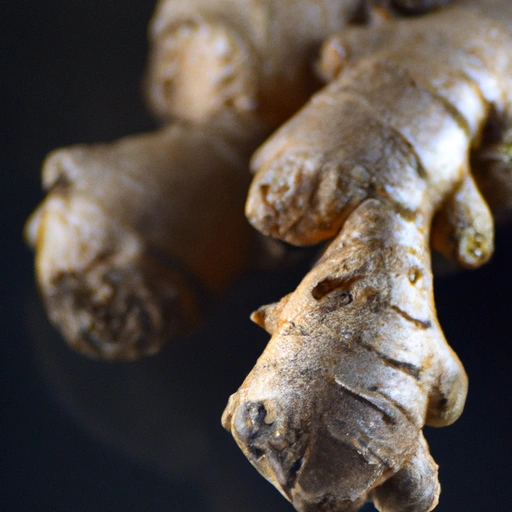Ginger Root
Description

Ginger root, known simply as ginger, is a flowering plant whose rhizome, or root, is widely used as a spice or a folk medicine. It's a staple in many forms of cooking and is known for its pungent, spicy, and slightly sweet flavor. Ginger can be used fresh, dried, powdered, or as an oil or juice, and is sometimes added to processed foods and cosmetics. It is a common ingredient in recipes across the globe and can be measured in various units, including grams (g), ounces (oz), teaspoons (tsp), tablespoons (tbsp), and cups, catering to Asian, American, and European measurements respectively.
Common uses
Ginger is commonly used to add flavor to sweet and savory dishes, beverages, and as a remedy for various ailments. It is also a key ingredient in many spice blends and is used in pickling processes and to make syrups, sauces, and marinades.
Nutritional value
Calories
Raw ginger is low in calories, with about 80 calories per 100 grams or 2.5 oz.
Protein
Ginger provides about 1.8 grams of protein per 100 grams or 0.06 oz.
Fat
It contains a negligible amount of fat, with roughly 0.75 grams per 100 grams or 0.026 oz.
Carbohydrates
Carbohydrates in ginger amount to approximately 18 grams per 100 grams or 0.63 oz, predominantly consisting of dietary fiber and sugars.
Vitamins
Ginger is a good source of Vitamin B6 and also contains small amounts of Vitamin C.
Minerals
It is rich in minerals such as potassium, magnesium, copper, manganese, and iron.
Health benefits
Ginger is known for its anti-inflammatory and antioxidant properties, and it has been used to aid digestion, reduce nausea, and help fight the flu and common cold. Its bioactive compound, gingerol, is responsible for much of its medicinal properties.
Potential risks
While ginger is safe for most people, it can interact with certain medications and may cause mild side effects like heartburn, diarrhea, and general stomach discomfort. It should be consumed in moderation, and individuals with specific health conditions should consult a healthcare provider before use.
Common recipes
Ginger is used in a vast array of recipes including gingerbread, ginger snaps, parkin, and speculaas cookies, as well as in many Asian dishes such as stir-fries, marinades, and sauces.
Cooking methods
It can be used in various forms such as fresh, dried, pickled, or candied. Ginger can be grated, chopped, minced, or sliced to infuse its flavor into dishes.
Pairing with other ingredients
Ginger pairs well with a variety of ingredients including meats, vegetables, fruits, and other spices. It is commonly paired with garlic, soy sauce, honey, and citrus in various cuisine.
Summary
Ginger root is a versatile and flavorful ingredient that is as beneficial for its nutritional properties as it is for its culinary uses. Its spicy, zesty flavor profile and health-promoting qualities make it a favorite ingredient in kitchens around the world, transcending cultural and geographical boundaries.